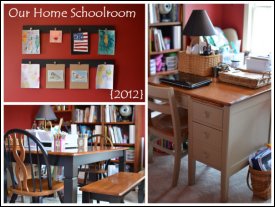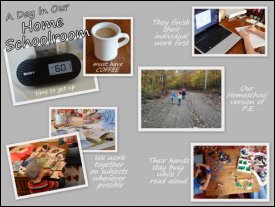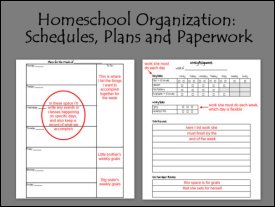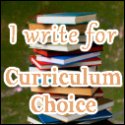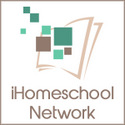How I Teach Science Using an Eclectic Lifestyle of Learning
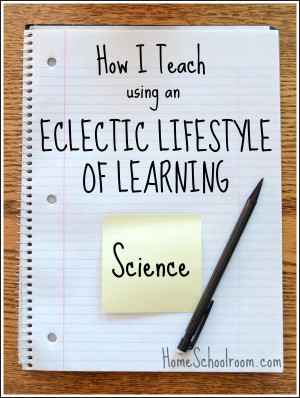
When I decided to homeschool I was excited to share my love of science with my kids. Like other subjects, I tackle it in lots of ways. We used a formal curriculum in the past, but it felt restrictive. That’s not to say I won’t use a formal curriculum again, especially in the later years, but this year we’re on our own.
My overall theory of science education is based in part on Ruth Beechick’s writings. I try to remove myself from the role of “answer giver,” which tends to stifle their curiosity. How do I make sure my kids are learning about the world of science? Easy: it’s all around us and they’re always asking questions!
Let me share specifics about nature study, since that’s a large component of our science studies, and then how we work in other fields of science quite naturally.
Nature Study
Nature study is a terrific area for homeschool science exploration because the specimens you need are right outside your door! It’s a classic part of a Charlotte Mason education and can start your children on a lifelong love of spending time in and observing nature.
Our nature studies are a combination of being open to opportunities and intentional about introducing topics.
Sometimes nature study finds you. This requires providing time in nature and showing my kids I’m willing to put my plans on hold to pursue what they find interesting. In other words, I have to be ready to stop and smell the roses…then look up why flowers have a scent!
When nature topics don’t naturally find us, being intentional about introducing topics can increase my children’s interest in nature. Regularly incorporating nature study is easier with help from Barb at The Handbook of Nature Study blog. She provides ideas, printables, helpful links, and a sense of community in studying nature. Follow her blog and before long you’ll have a nature table and be heading out looking for lichen or drawing dandelions.
Our study of birds is a good example of how studying nature can fosters more interest. We began learning the names of our backyard birds, then did a bird unit study. Now each February we participate in the Great Backyard Bird Count, we continue to learn about new birds we see, find topics we want to research further (like murmuration), and my kids consider themselves birdwatchers.
Nature study is a valued and diverse part of our science education. Here are some other things we’ve done this year:
- Studies the moon and its phases
- Took a trip with Diver Ed for an up-close look at ocean life
- Learned about Squirrels (inspired by our frequent backyard visitor)
- Visited a bird sanctuary for a presentation on owls, then of course we dissected owl pellets (best science project ever!)
- Right now we’re studying weather predicting using the book The Kids’ Book of Weather Forecasting (One of my educational Christmas gifts to my children.)
Other Science Learning
Other than nature study what do we do? Again, I focus on being open and intentional!
Lots of science topics come up naturally. Just think about these questions from my children: Why does my skin form a scab? Why do racing bikes have thin tires? Why does the salt keep ice off the roads? There you have biology, physics, and chemistry! I try to find answers to their natural questions.
A note to other moms like me who plan TOO much: it also doesn’t require a full blown unit study when your child asks how a compass works. Grab a book, watch some YouTube videos and make a start!
Other than pursuing interest-led topics, I work to be intentional about introducing scientific information and skills. My goal is to expose them to the fascinating science all around them and show them how to learn more! Books, videos, and hands-on learning round out our science education.
Science Books
We books we own or borrow from the library for reading aloud, as a reference, or just to leave sitting around to encourage looking through. The books can be filled with pictures, in-depth information, and sometimes even hands-on learning ideas. Right now I’m considering adding The Story of Science (here is a review by a fellow Curriculum Choice author) so we can read about science discoveries that coordinate with our history studies.
Science Videos
We often watch science videos during our “Learning Lunch,” or with my husband on the weekends. Here are some of our favorites:
- Beakman: This is a humorous general science show available on Netflix right now. There are even ideas for projects: my kids still remember the camera obscura we built from a cardboard box!
- Bill Nye: My kids don’t like him quite as much as Beakman, but it is a good show where each episode centers around a theme.
- Science Friday: In these short videos on YouTube they speak to experts in a particular field of science, so it’s neat to see the variety.
- Magic School Bus: These are wonderful for younger kids, sadly we’re beginning to outgrow them!
- How It’s Made from the Science Channel is also on Netflix. It’s fun to see what’s behind everyday items from guitars to cars.
- Mythbusters: There can be adult topics so I make sure to watch with my children, but I find it loaded with good information and a demonstration of the scientific technique. My son will often experiment on his own after watching the show.
Science Equipment and Supplies
I aim to hone their ability to collect, observe and experiment by having scientific tools and supplies in our home. They provide a lot of opportunities for hands-on learning. We add to our materials over time, keep our eye out for used items, and use them as gift ideas!
These are favorites in our home that get regular use:
- Magnifiers and microscopes: from a jeweler’s loupe and pocket microscope (both around $5) to a full size microscope and stereo microscope (purchased used) we enjoy getting an up close look at little things, like snowflakes.
- Snap Circuits: a super hands-on electrical circuit learning toy.
- Models and specimens: a mini skeleton (“Mr. Bones”) and human body with organs (“Mr. Gooey”), insects in acrylic, and our own collection of natural items
- Science kits: These help with specific interests. We’ve enjoyed dissecting owl pellets and testing for bacteria this year. We’re looking forward to working through some new kits my son received for Christmas.
So that’s the not-so-succinct summary of our science learning. Join me next time for how I teach history!
The “How I Teach” Series:
 Hi, I'm Heidi and I homeschool my two sweet kids. I want them to know that learning is an exciting lifelong adventure! We love great books, unit studies, notebooking, lapbooking, and hands-on learning.
Hi, I'm Heidi and I homeschool my two sweet kids. I want them to know that learning is an exciting lifelong adventure! We love great books, unit studies, notebooking, lapbooking, and hands-on learning.